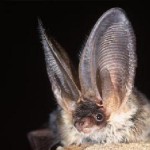
As if their looks aren't enough, male peacocks have a special mating call too. Image: Hintau Aliaksei/Shutterstock
When male peacocks display their feathery plumage they are also having infrasonic conversations.
Male peacocks put on an ostentatious visual performance to attract their female counterparts — who are admittedly quite dull in appearance. As if this was not impressive enough, scientists from the University of Manitoba, Canada, have discovered that these lusting males also have deep rumbling love calls in their mating ritual repertoire.
The research team recorded very low-pitched mating calls, which are inaudible to humans — below 20 hertz — and produced by vibrations of the feather-train. The findings were reported in June at an annual meeting of the Animal Behaviour Society in New Mexico.
It has been known for a long time that peacocks, and other birds, can communicate via vocalisation — many people are all too familiar with painfully audible peacock shrieks. However, the discovery of this inaudible type of call sheds light on a different level of communication, which humans have generally found hard to witness since it is not in our normal hearing range.
Lead scientist, Angela Freeman, and her colleagues found that male peacocks actually produce two subtly distinct types of infrasonic mating calls.
The first type, which the scientists dubbed the ‘shiver train’ is produced by vibrations from the centre of the train feathers to the edge of the plumage. This is used when females are far away.
The second type, called the ‘pulse train’, is delivered when a female is close, and produced by vibrations emanating from the base of all train feathers.
When Freeman played recordings of the newly discovered infrasonic call to a group of peacocks, she found that the females looked alert while the males would shriek out in competitive outrage.
According to Rosylin Daken from Queens’ University in Kingston, there are many complex and unknown cues that peahens use when choosing a mate.
Physical attributes of male peacocks — such as eyespot number and broken feathers — seem to be carefully considered. However, Daken was not surprised by the findings, which suggest there is more to peacock communication than meets the human eye and ear.
Source: Science News






